| The wave of the future
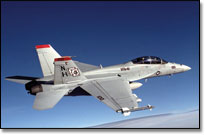 In today's volatile global environment, the watchword for the U.S. Navy
is readiness—being able to
deploy and package force response immediately. In today's volatile global environment, the watchword for the U.S. Navy
is readiness—being able to
deploy and package force response immediately.
To bring the appropriate military capability to virtually any situation,
the U.S. Navy has developed Sea Power 21, its vision for projecting decisive
joint capabilities from the sea. Sea Power 21 includes three elements:
Sea Strike (projecting offense), Sea Shield (projecting defense) and
Sea Basing (projecting sovereignty). These are linked by FORCEnet, the
framework for naval warfare in the information age. Aimed at connecting
systems, FORCEnet allows warfighters, platforms and sensors to rapidly
communicate and collaborate in the battlespace.
FULL STORY >>

Golden opportunity at Ft. Knox
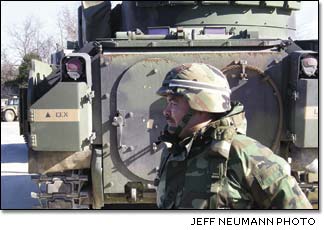 As coalition forces continue their
hard work in Iraq, a U.S. Army–wide initiative to replicate tactics used in Iraq
is under way at military installations across the United States. One of these
is Ft. Knox, Ky., home to the Army Armor Center and responsible for training
armor and cavalry soldiers. As coalition forces continue their
hard work in Iraq, a U.S. Army–wide initiative to replicate tactics used in Iraq
is under way at military installations across the United States. One of these
is Ft. Knox, Ky., home to the Army Armor Center and responsible for training
armor and cavalry soldiers.
The Armor Center's training curriculum, like many other Army training
programs, has changed significantly because of the war in Iraq. In coming
years, that curriculum will experience even more dramatic change as the
Army begins spiraling new technologies being developed by the Future
Combat Systems program into the hands of the current force. A Boeing–Science
Applications International Corporation team is the Lead Systems Integrator
for FCS.
FULL STORY >>

Right. On target.
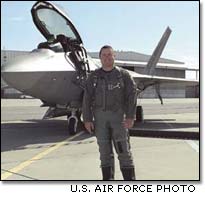 On April 17, 2004, flying a mission over Iraq, U.S. Air Force F-15E
Strike Eagle pilot Maj. David Grimwood and his weapons systems officer,
Lt. Col. Jim Bessel, dropped a 2,000-pound (907- kilogram) Joint Direct
Attack Munition on
a suspected hideout for insurgents. On April 17, 2004, flying a mission over Iraq, U.S. Air Force F-15E
Strike Eagle pilot Maj. David Grimwood and his weapons systems officer,
Lt. Col. Jim Bessel, dropped a 2,000-pound (907- kilogram) Joint Direct
Attack Munition on
a suspected hideout for insurgents.
It was Maj. Grimwood's first drop of a JDAM. "We had a strike request
from the Army," he said. "It was against a position insurgents had used
for several nights to fire mortars at a U.S. Army base. We don't know
if insurgents were there at the time the bomb went off, but we do know
that for the next week, that army unit never got attacked."
Maj. Grimwood and hundreds of other pilots and weapons systems officers
(WSOs) who have dropped tens of thousands of JDAMs have been singing
the weapon's praises since 1998 when the first JDAM was produced.
FULL STORY >>

Answering the call
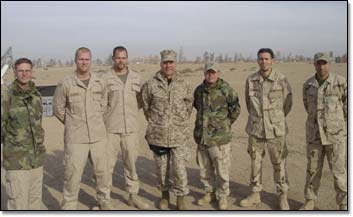 While the world focused on Athens last summer for the Games of the XXVIII
Olympiad, a championship team from Hellenic Army Aviation was operating
Apache helicopters behind the scenes to ensure that events at the Games
were "uneventful." While the world focused on Athens last summer for the Games of the XXVIII
Olympiad, a championship team from Hellenic Army Aviation was operating
Apache helicopters behind the scenes to ensure that events at the Games
were "uneventful."
In fact, a team from the Hellenic Army's 1st Attack Helicopter Battalion
maintained Apaches on "10 minute alert" for the duration of the Games.
"We never flew over a stadium during the Olympics, and few people knew
we were there. But like Olympic athletes, our training left us prepared
to do our jobs with precision and accuracy," said Hellenic Army pilot
Maj. Chris Dimopoulos, the deputy commanding officer of the 1st Attack
Helicopter Battalion. "We felt like guardian angels for the Olympics,
and we were ready to serve in our Apaches."
FULL STORY >>

Taking flight
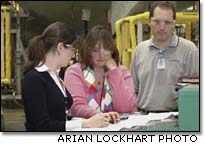 As Boeing works toward making good on its goal of building its new 787
Dreamliner and pursues other projects, the Commercial Airplanes team
has considered a number of options for the engineering work involved.
In some cases, Commercial Airplanes has looked south, combining airplane
know-how with
rocket science.. As Boeing works toward making good on its goal of building its new 787
Dreamliner and pursues other projects, the Commercial Airplanes team
has considered a number of options for the engineering work involved.
In some cases, Commercial Airplanes has looked south, combining airplane
know-how with
rocket science..
Well into the fall of 2004, the Engineering organization at Boeing Canoga
Park/Rocketdyne in California was facing some very tough choices. The
cancellation of NASA's Next Generation Launch Technologies programs in January and an
overall flat launch market posed serious threats to viable work for dozens
of engineers. Instead of giving in, Rocketdyne hunkered down and began
feeling out the rest of Boeing for possible projects. After months of discussion,
planning and development,
they
struck pay dirt—creating a way to save
jobs and supporting the company's stable workforce initiative by winning work
on
Commercial Airplanes projects.
FULL
STORY>>

Windows on the universe
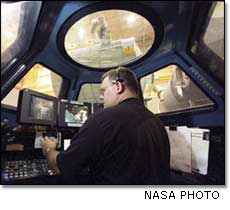 Future visitors to the International Space Station will enjoy a room
with
an astounding view, thanks in part to
Boeing. Future visitors to the International Space Station will enjoy a room
with
an astounding view, thanks in part to
Boeing.
Company engineers provided the designs for the specially made windows
and attaching mechanisms for the Italian-built cupola, a seven-window
observatory for the ISS.
Boeing completed preliminary designs for the cupola in the early 1990s,
when a NASA barter agreement resulted in the European Space Agency and
Alenia Spazio assuming responsibility for design and construction. Boeing
engineers in Huntsville, Ala., played a significant role in developing
the window assemblies for the dome-shaped structure, including the large,
29-inch window on the top and six trapezoid-shaped windows on the cupola's
sides.
FULL STORY >>

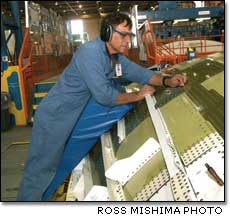 Safety
(and quality) First Safety
(and quality) First
Over the past decade, Boeing's C-17 Globemaster III program has built
its reputation on worldclass quality. The advanced airlifter has won
dozens of prestigious honors, including leading Boeing Airlift and Tankers
to
the esteemed Malcolm Baldrige National
Quality Award.
Now, the Long Beach, Calif.–based program is embarking on a journey
to become world-class in safety, as well as quality.
"Integral to quality and woven throughout our value system lies a sometimes
forgotten imperative—safety first," said Dave Bowman, vice president
and C-17 program manager. "When our teammates are injured, it's bad for
them and it's bad for our business."
FULL STORY >>
|

